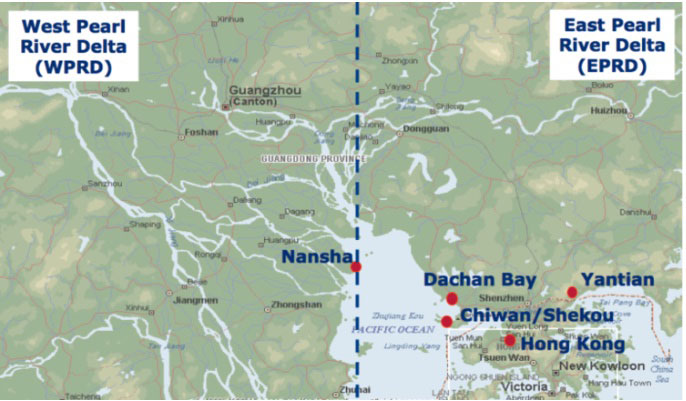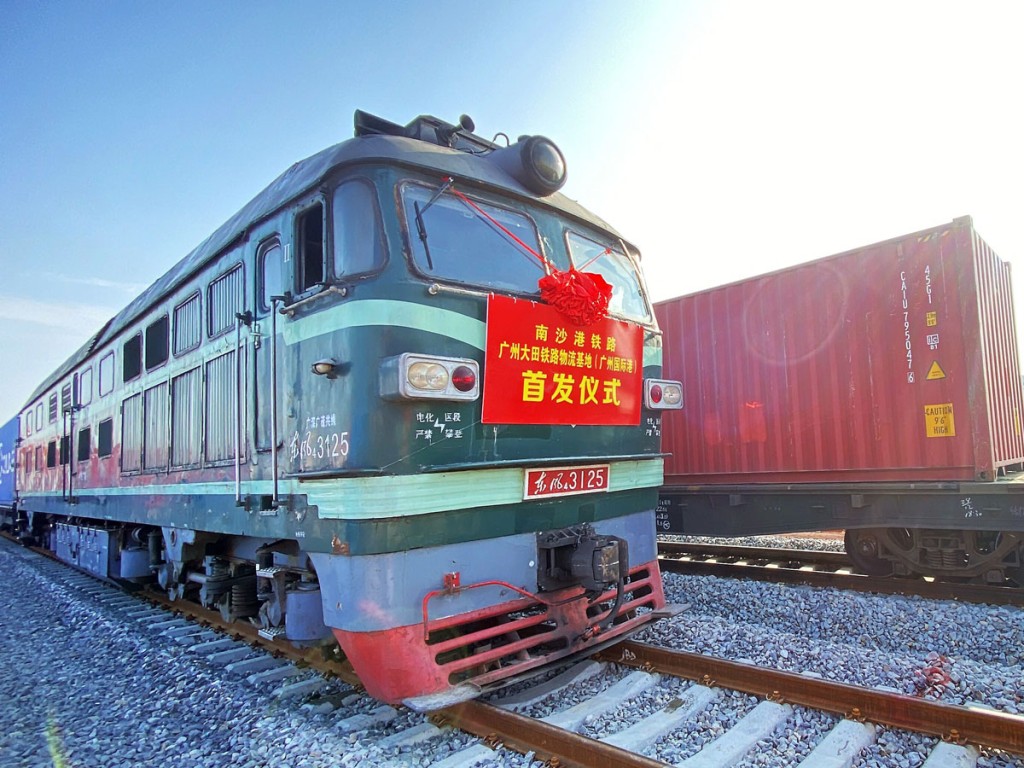The Port of Nansha fastest growing port in South China secures another record year at 17.6 million TEUs. And in 2021 the Port of Nansha added on dock rail, cold storage, and dry warehousing facilities to its already world-class facilities.

The Port of Nansha, part of the Guangzhou Port Group, continued its remarkable run of record years in 2021.

But records are nothing new to the Port of Nansha, the fastest growing port in South China. The Port of Nansha and the GPG, as a group, has recorded a remarkable string of 16-consecutive years of growth. The Port is ranked number 5 in the “Global Container Port Rankings” and number 4 among China’s container ports. In addition, the Phase 4 new fully automated container terminal opening in the 3rd Quarter of 2022 will add approximately 5 million TEUs in capacity.
One big reason, for the Port of Nansha’s continued success, is the fact it never closed during the COVID-19 disruptions in 2021.
The Port of Nansha’s resilience and ingenuity were tested when in May of 2021, the Port of Yantian located northeast of Hong Kong on Mirs Bay, had an unexpected COVID-19 outbreak that resulted in a suspension and a severe slow down at the port.
To accommodate the unexpected influx of container traffic, Nansha had to re-engineer and improve “Nansha Terminal Operation Procedure” to adapt to this situation. Some of the procedures involved COVID-19 related practices like testing temperature checks and educating “new” truckers to the basic terminal operations.
The cooperation of all parties paid off and enabled the Port of Nansha to handle ship calls with a remarkable 275,000 TEUs over the normal container flow-through at the Port’s three terminals. For shipper’s the closing of Yantian and other service disruptions shows the necessity of port diversification to the supply chain and the value of a port like Nansha to the South China-U.S. trade lane.
Another reason for the continued success at the Port of Nansha is the ongoing improvements to the terminals and facilities (including Phase 4). The Port has added new dry and cold warehousing as well as South China’s only true on-the-dock rail system.
The rail connection was a particularly important addition to the Port’s infrastructure. The Nansha Port Railway is a national first-class double-track electrified railway with a designed speed of 120 kilometers per hour (74.56 mph) and has a total length of 88 km (54.7 miles). The route will start at the Yayao line of Guangzhou-Zhuhai Railway, pass through Jiangmen, Zhongshan, Foshan and Guangzhou, and end in the Nansha Port area.

Eight stations serving passengers and cargo are spread out across the line. Freight trains traveling directly to Europe will depart from Nansha Port, which can greatly reduce the logistics cost of port industries. Transportation time will be reduced by about 30% and logistics costs will be reduced by about 10%, according to officials from Guangzhou Port.
The completion of the railway means that a connected multi-modal transport network of ports, railways and highways will serve the Guangzhou Region along the Pearl River.
It’s worth noting that within a radius of 100 miles, the Port of Nansha covers 14 dynamic city clusters such as Guangzhou, Foshan, Zhongshan and Jiangmen which contribute to the Port’s freight footprint.
There is also a strong economic reason for the Port of Nansha’s continued success as it has a cost advantage over other South China ports. The Port’s location on the western side of the Pearl River is near much of the region’s manufacturing. Factories can perform multiple round trips per day versus a long dray from the Shenzhen ports on the other side of the Pearl River. This realizes a cost savings of 30%-40% origin truck savings plus the reduction in trucking can cut CO2 emissions in half. And the Port is efficient, with 31 minute turn-times for the yard and no wait outside gates. Additionally, Nansha boasts 36 gates inbound and 24 gates outbound, open 24 hours a day, seven days a week.
Overall, the Port has over 100 scheduled liner services to ports around the world with 8 sailings a week to North America. The Port has 16-mega containership berths, serviced by 64 gantry cranes and a 60 square/kilometer (14,826 square acres) Free Trade Zone.









